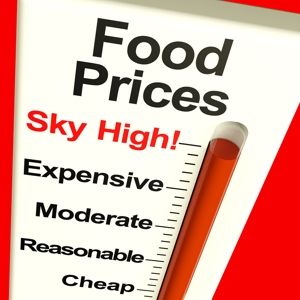Canadians are becoming poorer at an alarming rate. So says Canada’s Food Guy, Prof. Sylvain Charlebois of the Agrifood Analytics Lab at Dalhousie University. And it’s clearly reflected in what we spend on food…

Continuing high food prices are taking a persistent and worrying toll on Canadians. And Charlebois says it’s a reflection of a much larger economic problem.
Unbalanced growth
‘Our population grew by more than three per cent last year, yet our GDP increased by less than one per cent.” Charlebois observes. “In other words, despite our growing population, Canada is becoming poorer, not richer.”
And that’s bad news for the food retailing sector.
Spending less each year
Canadians are spending less each year on food.
“As of January 2024, the average Canadian is spending $248 a month on food retail sales per capita, down from $258 in January 2023 and $282 in February 2017. […] Based on Canada’s Food Price Report 2024, an individual’s monthly expenditure for a healthy diet should be $339.”
And that means grocers are faced with a ‘multiple’ whammy situation.
A perfect storm
Food retailers are in the middle of a tornado of economic threats, many of which consumers are unaware of. These include higher farm-gate food costs due in part to soaring fertilizer costs, rising transportation costs due to higher fuel prices. Not to mention the kind of challenges all businesses face these days: steadily increasing utility costs, creeping increases in the cost of contracted outside services, and, of course, rising taxes.
Their go-to tactic of offloading rising costs onto suppliers and consumers is getting pretty stale. Something will soon have to give. Charlebois says conditions are ripe for a supermarket price war later this year. That would be good for consumers, and bad for supermarket shareholders.
Don’t worry about the shareholders, though. Even with all the upheaval in the food chain last year, 4 of the 5 largest supermarket combines in Canada reported record profits. Maybe it’s time the realities of the food price situation came home to roost with them.
A ‘down trading’ economy
Charlebois says what’s happening is, we’ve switched from a positive economic model to a negative one. We’re now coping with the reality that our pay doesn’t go as far as it used to. In fact, we’re currently spending about 18 per cent of all our retail dollars on food, compared to 21 per cent in 2017. That’s a double whammy combined with the inexorable rise in prices.
In the name of ‘coping’, we’re accessing cheaper No-Name and house brands, cutting non-essentials, limiting meat purchases and (however reluctantly) reducing our purchases of the most nutritious foods we could buy – fresh fruits and vegetables.
No solution in sight
Alas, Charlebois says, there is no easy solution in sight for the compound pressures plaguing Canadian consumers. Wherever the solution ultimately lies, it’s at a much higher level and retail food prices. Governments take note. The time to act decisively is now…
~ Maggie J.

